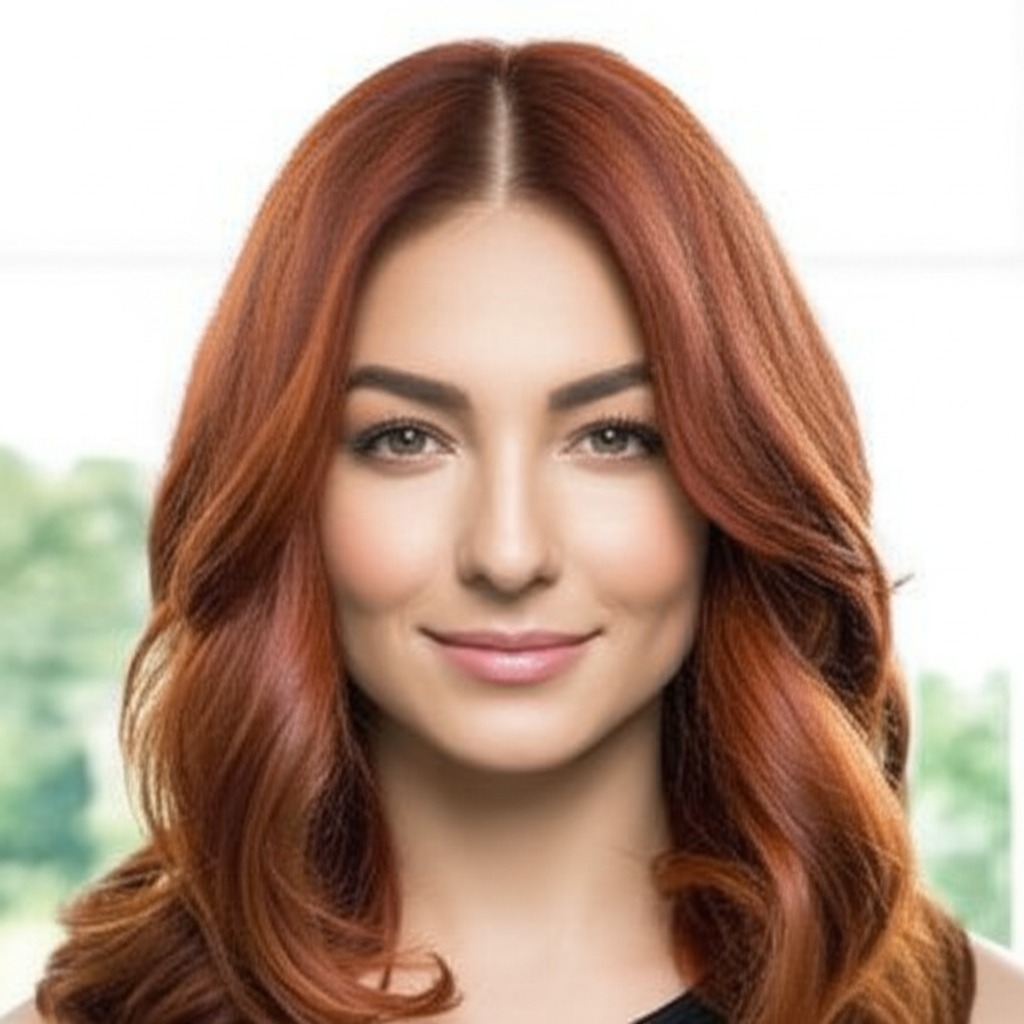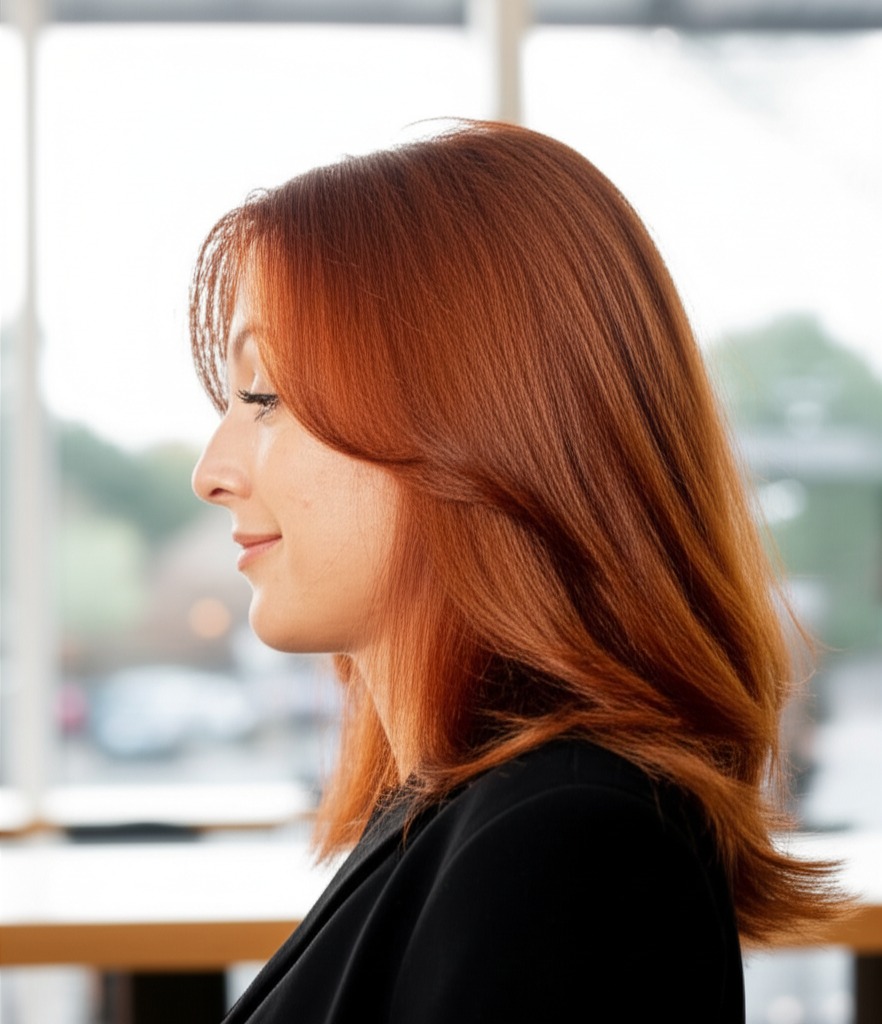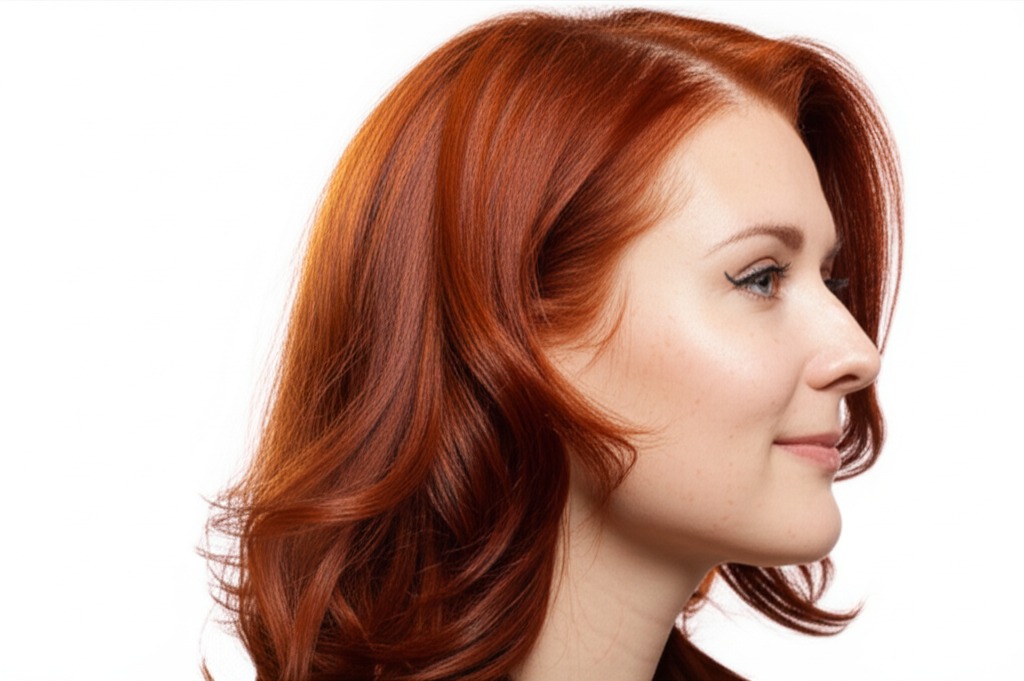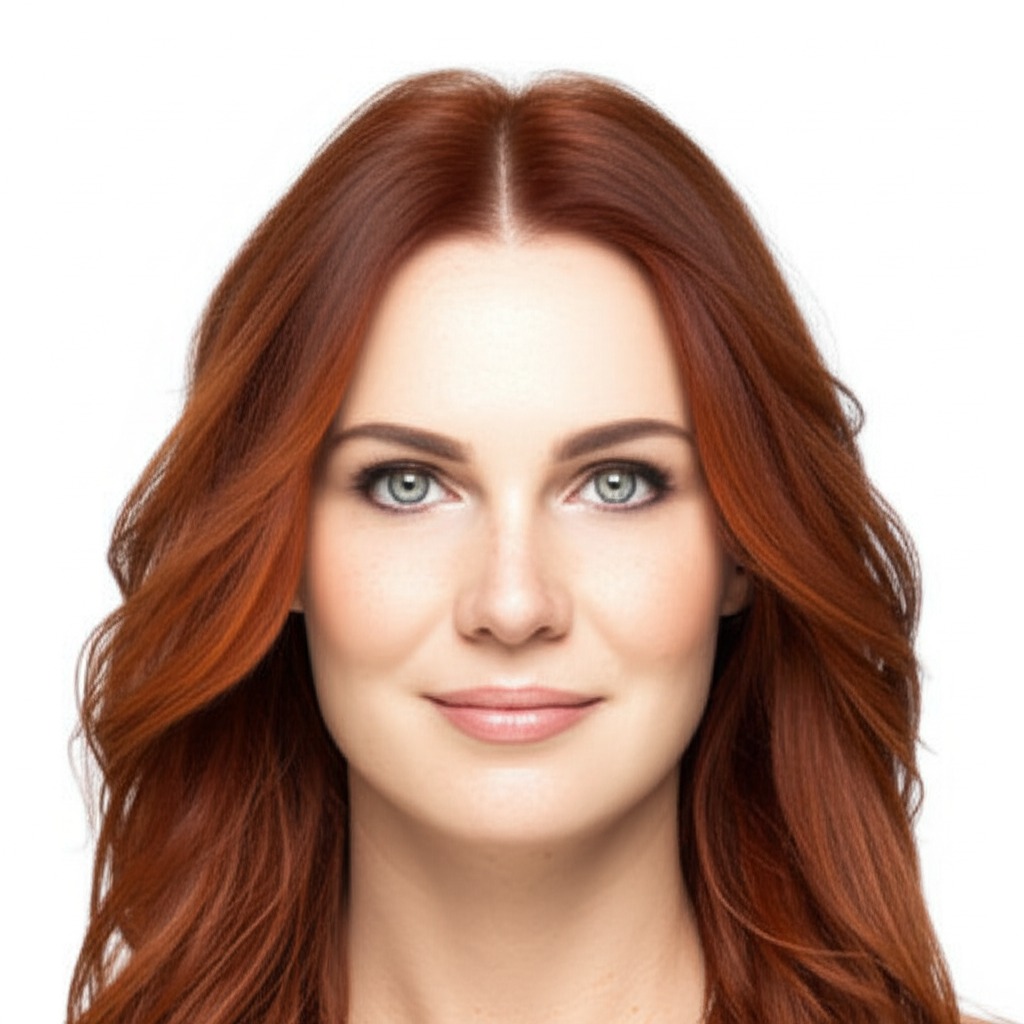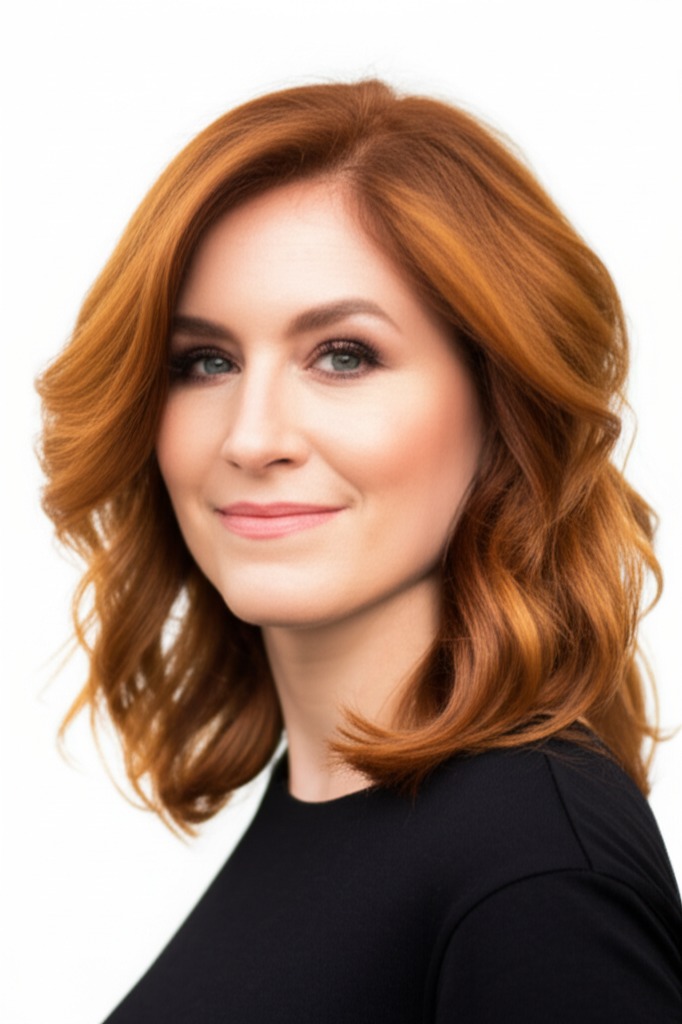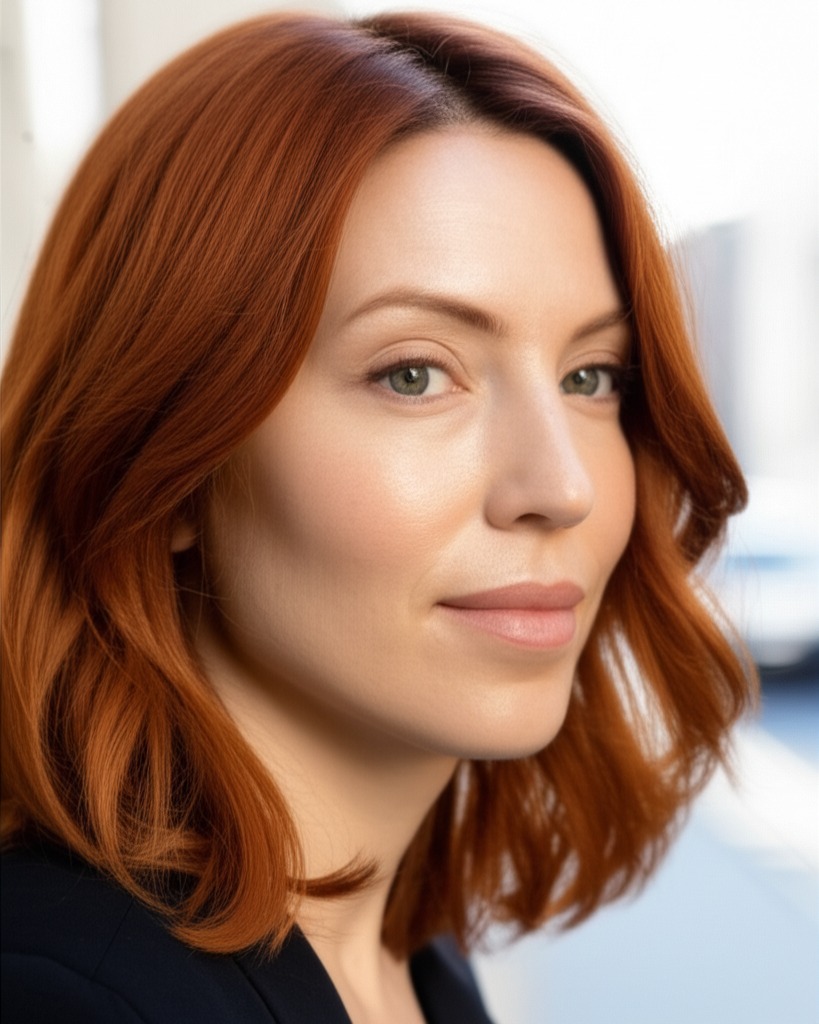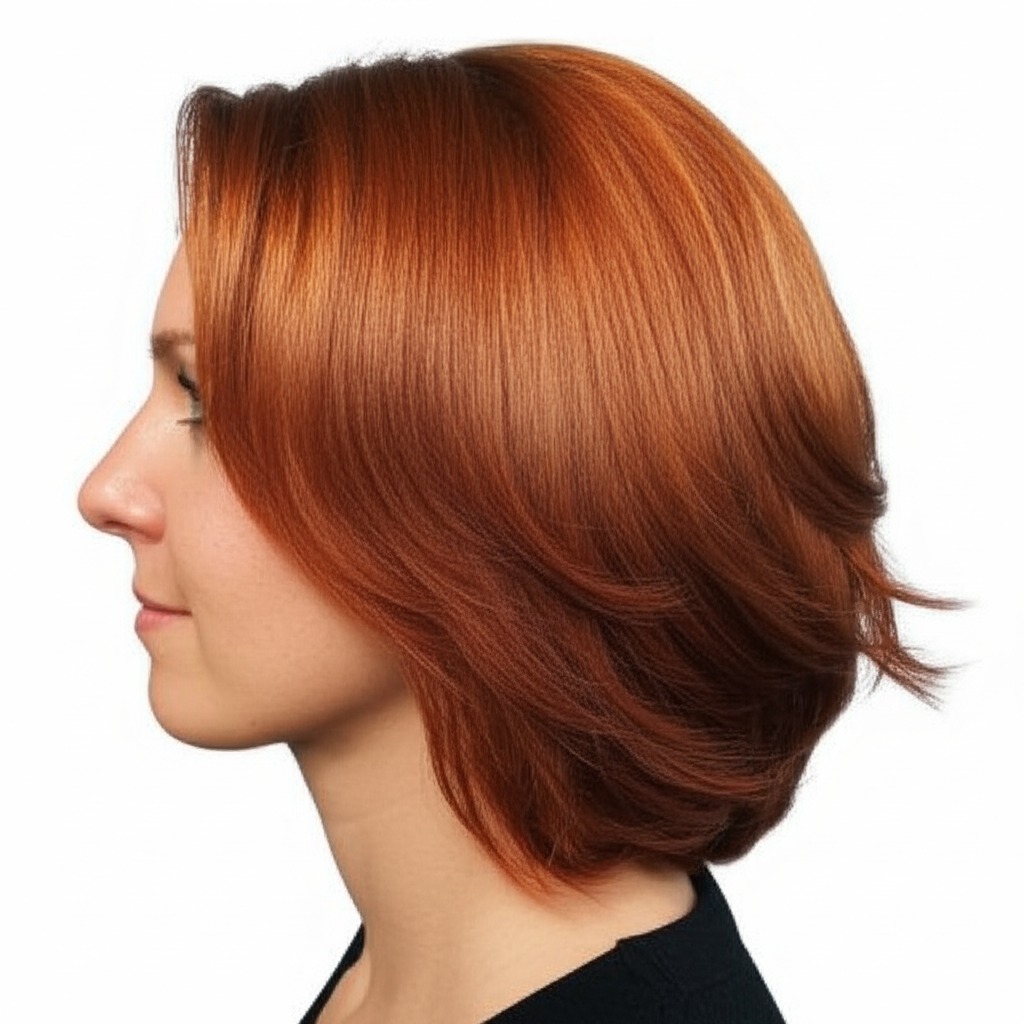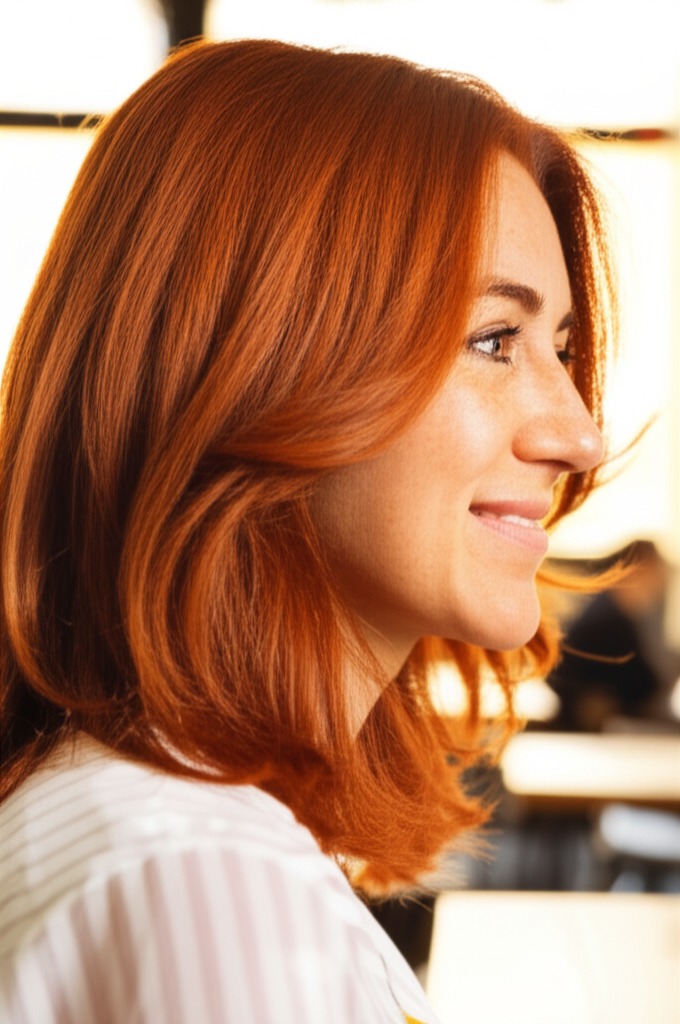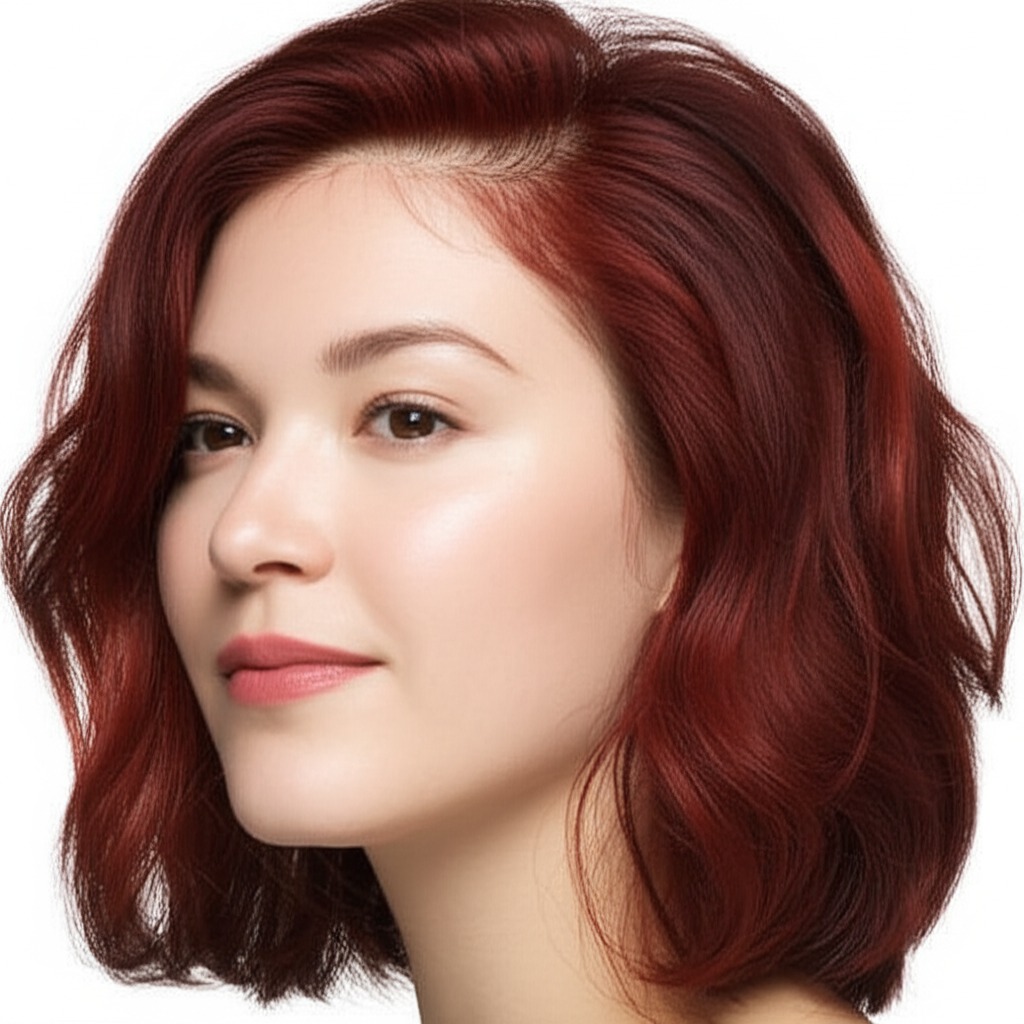#Auburn Hair Color: A Warm Embrace for Your Locks
Auburn hair is a timeless classic – think fiery sunsets, rich autumn leaves, and the cozy feeling of a crackling fireplace. It's more than just "red"; it’s a complex blend of reds, browns, and sometimes even hints of gold or violet that creates a truly captivating look. This guide will break down everything you need to know about auburn hair color, from understanding its nuances to keeping it looking gorgeous for longer.
#1. Understanding the Shade: Defining Auburn
Auburn isn’t one single shade; it's a family of colors! Here’s what contributes to its unique character:
- Undertone: This is key. Most auburn shades lean warm, meaning they have reddish or golden undertones. However, you can find cooler auburns with hints of violet or burgundy that soften the red and make it more muted.
- Warm Auburn: The most common type – think copper, ginger, and rich mahogany tones. These radiate warmth and glow beautifully in sunlight.
- Neutral Auburn: A blend of warm and cool tones; these are often easier to wear across a wider range of skin tones. They offer a more balanced feel.
- Cool Auburn: Less common but stunning – think deep burgundy with red undertones, or muted cranberry shades. These have a sophisticated, slightly mysterious vibe.
- Depth (Levels): Hair color is measured on a level system from 1 to 10, with 1 being the darkest black and 10 being the lightest blonde. Auburn typically falls between levels 4-7:
- Level 4-5: A darker auburn – rich mahogany or deep chestnut tones.
- Level 6-7: A more vibrant, medium auburn - often with brighter red highlights.
#2. Who Does Auburn Flatter? Finding Your Perfect Match
Auburn isn't a one-size-fits-all color. Here’s how to determine if it will complement you:
- Skin Tone & Undertone:
- Warm Skin Tones (yellow, golden undertones): Generally rock warm auburn shades the best! Think peachy skin tones, olive complexions, and those who tan easily.
- Neutral Skin Tones: Lucky you! You can often pull off a wider range of auburns – from warm to neutral to slightly cool.
- Cool Skin Tones (pink, blue undertones): Can wear auburn, but need to be careful. A cooler, more muted auburn with burgundy or violet hints will look best and avoid washing you out. Avoid overly bright, copper tones.
- Eye Color: Auburn often enhances eye color!
- Green Eyes: Auburn creates a stunning contrast that makes green eyes pop.
- Brown Eyes: Auburn adds warmth and depth to brown eyes, making them appear richer.
- Blue/Gray Eyes: A cooler auburn shade can create a beautiful, slightly mysterious look with blue or gray eyes.
- Natural Level Starting Point: The darker your natural hair color, the more visible the change will be. Someone starting at level 6-7 might only need subtle toning to achieve an auburn hue, while someone starting at level 4 may require a more significant color lift.
#3. Technique Options: From Subtle to Statement
How you apply auburn makes a huge difference in the final result!
- Single Process: This is the most straightforward – applying a uniform color all over. Good for covering grays or making a noticeable overall change.
- Highlights/Lowlights: Adds dimension and depth. Warm highlights brighten the auburn, while lowlights add richness and contrast.
- Babylights: Very fine, subtle highlights that mimic natural sun-kissed streaks – creates a soft, diffused look.
- Gloss/Toner: A semi-permanent color applied after the main color process to refine the tone (adding warmth, coolness, or shine). Essential for maintaining auburn's vibrancy!
- Balayage-Effect vs Solid: Balayage creates a more natural, blended look with softer roots and gradual transitions. A solid application provides even coverage but can appear harsher if not expertly applied.
#4. Maintenance & Longevity: Keeping Your Color Glowing
Auburn requires commitment to keep it looking its best!
- Wash Frequency: Less is more! Aim for 2-3 washes per week using color-safe shampoo.
- Toner Refresh: Toners fade quickly, so plan on a toner refresh every 4-8 weeks depending on the shade and your hair’s porosity (how well it absorbs moisture).
- Root Growth Pacing: Discuss with your stylist how often you'll need root touch-ups. A balayage or babylights technique allows for more time between appointments.
- Budget/Time Planning: Auburn color is generally considered a medium-to-high maintenance option. Expect salon visits every 6-12 weeks and potentially higher costs due to multiple processes (color, toner).
#5. Seasonality & Pairing with Cuts: Embracing the Vibe
Auburn's versatility shines in different seasons!
- Bob/Lob: A sleek bob or lob highlights the richness of auburn – especially flattering for those with angular features.
- Long Layers: Adds movement and dimension, allowing the color to truly shine through.
- Pixie Cut: Short styles can handle a bolder auburn shade as it's showcased on shorter lengths.
- Seasonal Tweaks: In summer, consider lighter, brighter auburn shades with golden highlights. As autumn arrives, deepen the tones for a cozy, autumnal feel.
- Event/Occasion Picks:
- Work: A more muted, neutral auburn is professional and polished.
- Daytime: A vibrant, medium auburn can brighten your look.
- Evening: Embrace bolder, richer tones for a dramatic effect.
- Weddings: Consider a softer, romantic auburn with subtle highlights.
#6. At-Home Care: Protecting Your Investment
Proper at-home care is crucial!
- Sulfate-Free Shampoo & Conditioner: Sulfates strip color and moisture – avoid them like the plague!
- Clarifying Cadence: While sulfate-free is key, occasional clarifying shampoos (every 4-6 weeks) remove buildup.
- Heat Protection: ALWAYS use a heat protectant spray before using any hot styling tools.
- Color-Safe Styling Tips: Minimize heat styling whenever possible. Opt for air drying or low-heat settings.
- Product Checklist: Color-safe shampoo, conditioner, deep conditioning mask, leave-in conditioner, heat protectant serum/spray.
#7. Common Pitfalls & How to Avoid Them
Let's tackle potential issues:
- Brassiness: Red tones can oxidize and turn brassy over time. Use a violet or blue toning shampoo occasionally to neutralize these unwanted tones.
- Banding: Uneven color application, often from improper technique or uneven product saturation. Choose an experienced stylist!
- Patchiness: Can occur if the hair isn't properly pre-lightened (if needed) before applying the auburn shade. A strand test is always recommended.
#8. Pros & Cons: Weighing Your Options
Pros:
- Versatile: Works with a wide range of skin tones and styles.
- Warmth & Glow: Adds instant radiance to your complexion.
- Timeless Appeal: A classic color that never goes out of style.
Cons:
- Maintenance Burden: Requires regular salon visits and at-home care.
- Fade Risk: Auburn tends to fade faster than some other colors, requiring toner refreshes.
#9. Salon Consultation Script: Setting Expectations
To ensure you get the auburn dream you envision, prepare for your consultation with these questions/prompts:
- "I'm interested in auburn hair color. Can we discuss my skin tone and undertone to determine which shade would be most flattering?"
- “What level are we starting at, and how much lifting (lightening) will be needed?”
- "Can you show me examples of different auburn shades on similar skin tones to mine?"
- "How long will the process take, and what is the estimated cost?"
- "What’s your recommended maintenance schedule for this color, including toner refreshes?"
- “Could we do a strand test to ensure I love the result before applying it all over?”
#10. FAQs: Your Auburn Questions Answered
- Can I go auburn directly from black hair? It's possible but requires significant lightening and multiple sessions, potentially damaging your hair. A gradual approach is safer.
- Will auburn make my teeth look yellow? Bright, copper-toned auburn can sometimes create this effect on some people. Choose a more muted or neutral shade to avoid it.
- How long does auburn last? The base color (if applied with permanent dye) will last for several weeks, but the tone will fade faster - typically 4-8 weeks without toner.
- Can I do auburn at home? While possible, achieving a professional result is challenging without proper training and tools. A salon visit is highly recommended.
- Is auburn damaging to my hair? Any color process involves some degree of damage. Proper pre-treatment, aftercare, and minimizing heat styling can help minimize this.
- What if I hate the auburn color? It will fade over time! If you dislike it, talk to your stylist about options for correction or a completely different shade.
Enjoy embracing the warmth and beauty of auburn hair – with proper care and guidance, it's sure to be a head-turning choice!

